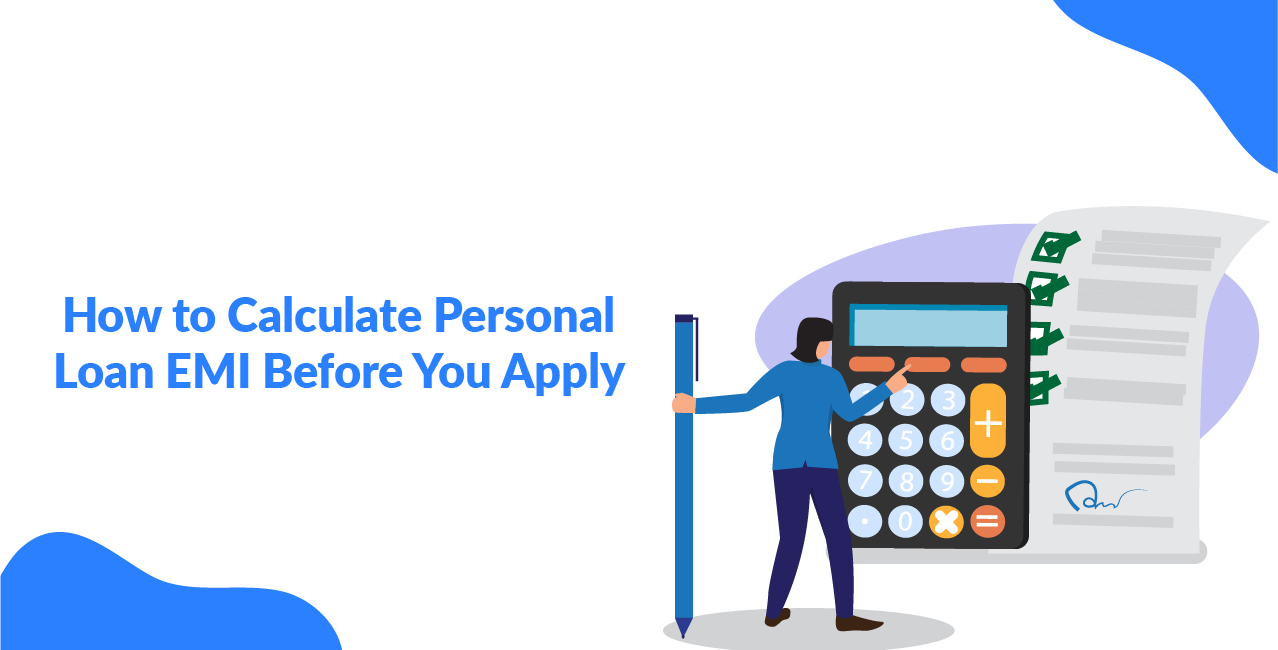How to Calculate Personal Loan EMI Accurately Before You Apply

Applying for a Personal Loan is a significant financial step, whether you’re planning a family event, funding medical treatment, or managing an emergency. Before you proceed, understanding how your monthly instalments work can make a meaningful difference to your repayment strategy. Accurately calculating your Personal Loan EMI can help you borrow wisely, stay financially prepared, and avoid surprises down the line.
Let’s examine how to do that, the tools involved, and the key factors to consider.
What Is a Personal Loan EMI?
An EMI (Equated Monthly Instalment) is a fixed payment amount made by a borrower to a lender every month. For Personal Loans, this EMI includes both the interest and the principal amount spread over the loan tenure.
The primary goal is to determine a manageable monthly amount based on your income and repayment capacity.
Why Calculating EMI Matters
Before applying, knowing your Personal Loan EMI gives you a clear idea of:
- The loan amount you can afford
- How the tenure affects your monthly outflow
- How changes in interest rate can impact your repayment
Without this clarity, you may end up borrowing more than you can comfortably repay or locking yourself into an unsuitable tenure.
Factors Affecting EMI Calculations
Several components contribute to every EMI calculation. Understanding these concepts ensures that you don’t rely solely on automated tools and know what to adjust to obtain an accurate figure.
1. Loan Amount
This is the total sum you borrow from the lender. Higher loan amounts lead to higher EMIs, assuming all other factors remain the same.
2. Interest Rate
The Personal Loan interest rate is a key factor. It determines the amount you pay in addition to the principal amount. Even a small difference in percentage points can lead to a noticeable change in the EMI.
3. Loan Tenure
This refers to the period over which you agree to repay the loan. Longer tenures reduce monthly EMIs but may increase the total interest paid over the loan’s lifetime.
4. Repayment Method
Some lenders offer reducing balance interest methods, while others use flat interest rates. This difference also affects your EMI.
EMI Calculation Formula
If you’re keen to calculate it manually, the formula is:
EMI = [P x R x (1+R)^N] / [(1+R)^N – 1]
Where:
- P is the principal loan amount
- R is the monthly interest rate (annual interest rate divided by 12 and then by 100)
- N is the number of monthly instalments
While this can seem complex, it’s useful to understand how each element influences the final EMI.
Using EMI Calculators
Most people today rely on online EMI calculators instead of manually applying the formula. These tools are available on financial websites, including those of trusted institutions like L&T Finance. By simply entering the loan amount, Personal Loan interest rate, and tenure, you get an instant monthly EMI figure.
Such calculators often come with sliders and options to compare various tenures and loan sizes, enabling you to quickly simulate multiple scenarios.
Tips to Ensure Accuracy
Here are a few suggestions to make sure your calculation is precise:
- Check the Interest Type: Confirm whether the calculator uses flat or reducing balance rates. The latter is more common for Personal Loans.
- Use Exact Values: Avoid estimates—rounding up or down can give misleading EMI amounts.
- Factor in Processing Fees: While not always included in EMI, fees affect your total outflow and should be considered in planning.
- Test Different Scenarios: Try changing tenure or loan amount to see what combination fits your repayment ability.
Always double-check your inputs and results to ensure your loan planning remains aligned with your financial capacity.
Understand Total Payable Amount
Beyond monthly EMIs, consider the total cost of the loan. Some borrowers focus only on the monthly figure and ignore the total interest payable. Understanding the full repayment value helps you decide whether the loan is worth it and compare offers more effectively.
When to Recalculate
It’s wise to re-check your EMI when:
- You get a revised loan offer
- The Personal Loan interest rate changes
- You decide to prepay or part-pay the loan
- Your financial situation changes, requiring tenure adjustments
Keeping your EMI calculation up to date helps you stay in control and avoid any repayment shocks.
Conclusion
Understanding and accurately calculating your Personal Loan EMI is more than a technical step; it’s a financial habit that encourages better planning and budgeting. Whether you’re borrowing from a large financial institution or a digital lender, entering with clarity empowers you to make informed, timely decisions that support your financial stability and long-term goals.


